AMERICAS
All You Need to Know About Continent : THE AMERICAS
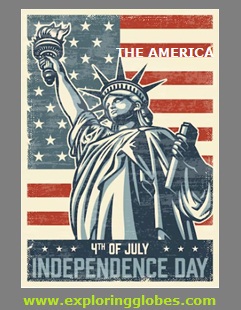
Facts about the North Americas
NORTH AMERICA:
1. The entire northern and western hemispheres are home to the continent of North America.
2. The continent of North America is home to 23 nations. The largest nation in North America is Canada, the second-largest nation in the globe and the northernmost nation on the continent. The largest economy in the world, the United States of America, is contained there.
3. Greenland, the largest island in the world, is situated on the continent of North America. Yet, the European nation of Denmark is the owner of Greenland. The northernmost location in the world is also associated with Greenland.
4. On the continent of North America, there are about 580 million people. The world’s largest concentration of Christians lives in North America. About 80% of the populace of Canada, the United States, and Mexico identify as Christians.
5. North America has five time zones and is the only continent with every type of climate.
6. It was named after the explorer Americo Vespucci and is also known as the “New World.”
7. Of the seven continents in the world, North America has the highest population density (22.9 people per square kilometer).
8. The largest freshwater lake in the world is Lake Superior in North America.
9. North America is home to the Mississippi River, the third-longest river in the world (3778 km), the continent with the greatest average per-person income among the continents, and the one with the highest average food intake.
10. North America includes the USA, which has the greatest economy in the world.
11. North America is the world’s top producer of soyabeans, maize, and other crops.
12. This continent is home to the Elf, the tiniest owl in the world.
13. The moose and the elk, found in North America, are the first and second tallest mammals on the continent.
14. Cuba, known as the “sugar bowl of the world,” is the world’s greatest exporter of sugar among the seven continents.
15. Hummingbirds, brown bears, bald eagles, bullfrogs, and brown bears are among the numerous notable animals found in North America.
Have a look at the list of North American nations and their capitals.
| SL.No. | North-America Country | Capital | Currency |
| 1 | Antigua and Barbuda | St. John’s | East Caribbean Dollar |
| 2 | Bahamas | Nassau | Bahamian Dollar |
| 3 | Barbados | Bridgetown | Barbadian Dollar |
| 4 | Belize | Belmopan | Belize Dollar |
| 5 | Canada | Ottawa | Canadian Dollar |
| 6 | Costa Rica | San Jose | Costa Rican Colon |
| 7 | Cuba | Havana | 2 currencies – Cuban Peso and Cuban convertible peso |
| 8 | Dominica | Roseau | East Caribbean Dollar |
| 9 | Dominican Republic | Santo Domingo | Dominican Peso |
| 10 | El Salvador | San Salvador | US Dollar |
| 11 | Grenada | St. George’s | East Caribbean Dollar |
| 12 | Guatemala | Guatemala City | Guatemala Quetzal |
| 13 | Haiti | Port-au-Prince | Gourde |
| 14 | Honduras | Tegucigalpa | Lempira |
| 15 | Jamaica | Kingston | Jamaican Dollar |
| 16 | Mexico | Mexico City | Mexican Peso |
| 17 | Nicaragua | Managua | Cordoba |
| 18 | Panama | Panama City | US Dollar (Panama locals call it Balboa) |
| 19 | Saint Kitts and Nevis | Basseterre | East Caribbean Dollar |
| 20 | Saint Lucia | Castries | East Caribbean Dollar |
| 21 | Saint Vincent and the Grenadines | Kingstown | East Caribbean Dollar |
| 22 | Trinidad and Tobago | Port of Spain | Trinidad and Tobago Dollar |
| 23 | United States | Washington, D.C. * | US Dollar |
El Salvador’s previous currency was the Colon, but in 2001 the US Dollar took its place.
Washington, D.C., is referred to as the “District of Columbia.”
The location of Washington is in this district. George Washington, a former US president, is honoured by the city’s name.
The District of Columbia is a federal district rather than a state (which means it is directly under the control of the federal government).
During the American Revolution, the word “Columbia” was used to refer to the US in a patriotic manner.
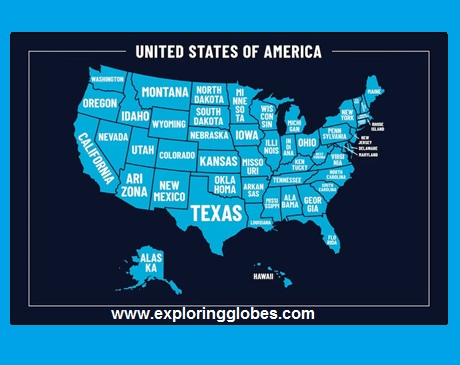
SOUTH AMERICA:
Details about the South Americas
1. The continent of South America is home to 12 separate nations.
2. With about 214 million people, Brazil is the largest and most populated nation in the continent.
3. This represents roughly half of the population of the continent.
4. Due to its size, Brazil has borders with nearly all of the other nations on the continent.
5. Sao Paolo, the largest city in the region with a metropolitan population of approximately 12 million, makes up five of South America’s ten largest cities, making Brazil even more populous than some South American countries.
6. South America is a continent of numerous natural marvels, including the Andes, the world’s longest mountain range.
7. The Atacama Desert in Chile and the Angel Falls, the highest waterfalls on earth. South America has 430 million inhabitants.
8. South America is home to the highest waterfalls in the world, the Angel Falls, as well as the second-longest river in terms of length (6440 km), the Amazon.
9. The green anaconda, the second-longest snake in the world, is found in South America.
10. This continent is home to the two tallest volcanoes in the world, Mt. Cotopaxi and Mt. Chimborazo.
11. Brazil, the world’s largest coffee producer, is located in South America.
12. The largest salt lake in the world, Salar de Uyuni (also known as the Uyuni salt flats), is located in South America.
13. Lake Titicaca, the highest lake in the world (3800 m), is also the largest lake in South America.
14. The Andes are the second-highest mountain range in the world, behind the Himalayas.
15. South American terrain contains these young-fold mountains.
16. The tallest peak in the Andes is Mount Aconcagua (7,021 m).
Have a look at the list of south American nations and their capitals.
| SL.No. | South-America-Country | Capital | Currency |
| 1 | Argentina | Buenos Aires | Argentine Peso |
| 2 | Bolivia | Sucre | Boliviano |
| 3 | Brazil | Brasilia | Real |
| 4 | Chile | Santiago | Chilean Peso |
| 5 | Colombia | Bogota | Colombian Peso |
| 6 | Ecuador | Quito | US Dollar |
| 7 | Guyana | Georgetown | Guyana Dollar |
| 8 | Paraguay | Asuncion | Guarani |
| 9 | Peru | Lima | Nuevo Sol |
| 10 | Suriname | Paramaribo | Suriname Dollar |
| 11 | Uruguay | Montevideo | Uruguay Peso |
| 12 | Venezuela | Caracas | Bolivar |
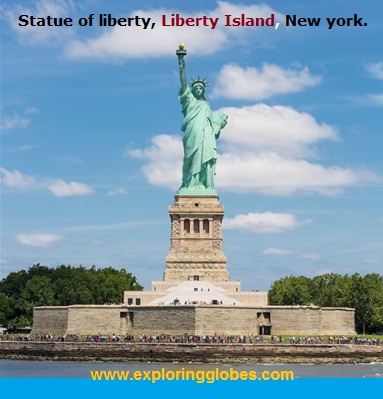
Other information about the Americas:
1 .Population The Americas are home to an estimated 998 million people, or 13% of the world’s population. Most populous Metropolitan Areas
2. The major cities in the Americas are: Los Angeles, New York, Buenos Aires, Mexico City, and So Paulo.
3. Highest Point At 6,960.8 metres, Argentina’s Aconcagua is the highest mountain in the Western Hemisphere (22,837 ft).
4. With a height of 6,168 metres, Denali in Alaska, commonly referred to as Mount McKinley, is the highest mountain in North America (20,239 ft).
5. Biggest Lake:-Lake Superior is the biggest lake in the Americas. It is the biggest Great Lake, and it is shared by the US and Canada. It is also the world’s largest freshwater lake, covering an area of 82,000 km2 (32,000 sq mi).
6. Lengthiest Rivers:-The Rio Amazonas (Amazon River), with a length of “at least” 6,400 km, is the longest river in the Americas (4,000 mi). The Peruvian portion of the Andes mountain range is where the Amazon River originates.
7. With a length of 4,880 km (3,030 mi), the Paraná is the second-longest river in the Americas. It passes through three nations—Argentina, Brazil, and Ocean.
8. Paraguay—before emptying into the Río de la Plata, an estuary in the Atlantic.
Given that the name of the “primary river” changes, there is a lot of debate regarding the longest river in North America.
9. At a length of 4,087 km (2,540 mi), the Missouri is the longest river in North America. Its source is in the Rocky Mountains in western Montana.
10. The Mississippi River, which rises in Lake Itasca in Minnesota, USA, is the second-longest river in North America at 3,766 km (2,340 mi).
America’s Principal Geographical Features
North America, South America, Central America, and the Caribbean are the major sub-regions.
Mountains
The American Cordillera, a network of mountain ranges spanning North and South America as well as West Antarctica, is made up of the Pacific Coast Ranges, the Rocky Mountains, and the Andes.
Plateaus and shields
North America –
North America’s Coteau des Prairies (in portions of South Dakota, Minnesota, and Iowa), Allegheny Plateau, Appalachian Highlands, Appalachian Plateau, Intermontane Plateaus with the Colorado Plateau and Columbia Plateau, Ozarks, and Yukon Plateau (Yukon Territory, Canada).
South America –
The Brazilian Highlands, the Mato Grosso Plateau, the Guiana Highlands, the Altiplano (High Plateau in Bolivia), the Atacama Plateau, the Guiana Shield, one of the three cratons of the South American Plate, and the Pakaraima Mountains, with Mount Roraima, are the major plateaus in South America (at the tripoint of Venezuela, Guyana and Brazil).
Lowlands –
There are a number of significant lowlands in the Americas, including the Great Plains (a portion of the Interior Plains of North America), which are found in the US and Canada, and the Atlantic coastal plain along the East Coast of the United States. The huge Amazon drainage basin, which takes up more than 35% of South America, is home to the lowlands of that continent. Uruguay, Argentina, and Brazil all share the fertile Pampas plains. Los Llanos (The Plains) is vast tropical grassland plain in Colombia and Venezuela, and the Gran Sabana (Big Savanna) is a sizable savanna region in Venezuela.
Deserts –
One of the driest regions on earth is the Atacama Desert, which is located in Chile and Peru. The largest and tallest salt desert in the world is located in Bolivia’s Salar de Uyuni (Salar de Tunupa). The Great Basin Desert is one of the largest deserts in North America, while the Patagonian Desert is the largest in the Americas. The Chihuahuan Desert covers a sizable portion of southern USA and northern Mexico. Much of the southwestern United States and the northwest Mexican states of Sonora, Baja California, and Baja California Sur are covered by the Sonoran Desert, which is the hottest desert in both Mexico and the United States.
Lakes –
Three of the Great Lakes of North America—Lake Superior, Lake Huron, and Lake Michigan—are among the largest freshwater lakes on the planet. Has an area of 8,372 km2. The biggest and safe lake in South America and world is Lake Titicaca.
Islands –
Greenland, Baffin Island, Victoria Island, Ellesmere Island, Newfoundland, Cuba, and Hispaniola are the largest islands in the Americas.
American languages –
When the Europeans arrived, the Americas were home to thousands of different languages. Spanish, English, Portuguese, some French and French-based creoles, and a few Amerindian languages are the main languages spoken in the Americas today.
-

 ASIA3 years ago
ASIA3 years agoAll You Need to Know About Continents : ASIA
-
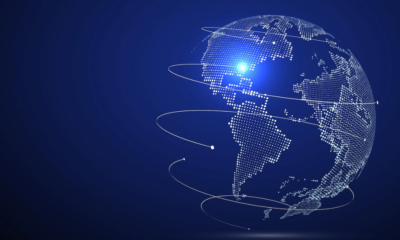
 WORLD INFO3 years ago
WORLD INFO3 years agoAll You Need to Know About Continents: Facts and More
-
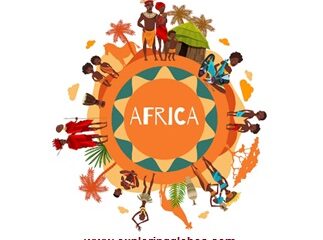
 AFRICA3 years ago
AFRICA3 years agoAll You Need to Know About Continents : AFRICA
-
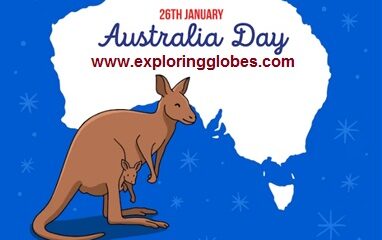
 AUSTRALIA3 years ago
AUSTRALIA3 years agoAll You Need to Know About Continents : Australia
-
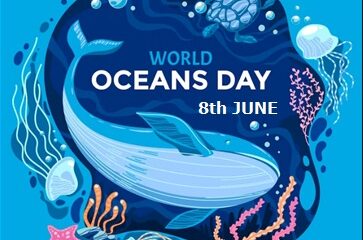
 WORLD INFO3 years ago
WORLD INFO3 years agoThe World’s Oceans
-

 EUROPE3 years ago
EUROPE3 years agoAll You Need to Know About Continents : EUROPE
-
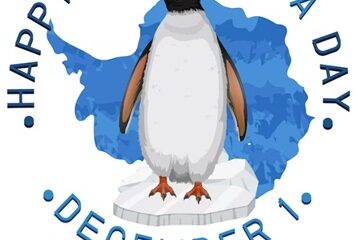
 ANTARCTICA3 years ago
ANTARCTICA3 years agoAll You Need to Know About Continents : Antarctica


iptv channels m3u
April 18, 2023 at 2:57 pm
Hi there would you mind letting me know which hosting company you’re working with? I’ve loaded your blog in 3 different web browsers and I must say this blog loads a lot faster then most. Can you suggest a good hosting provider at a honest price? Thanks, I appreciate it!
SAGAR KUMAR DAS
September 25, 2023 at 12:11 pm
Jay jagannath dear
For your interest i suggest you purchase domain + host services only from Hostinger at minimum price .If you purchase both in the occasion of Black friday deal surely you get more discount never before. Have a good day dear.
sagar kumar das -founder of Exploringglobes.com